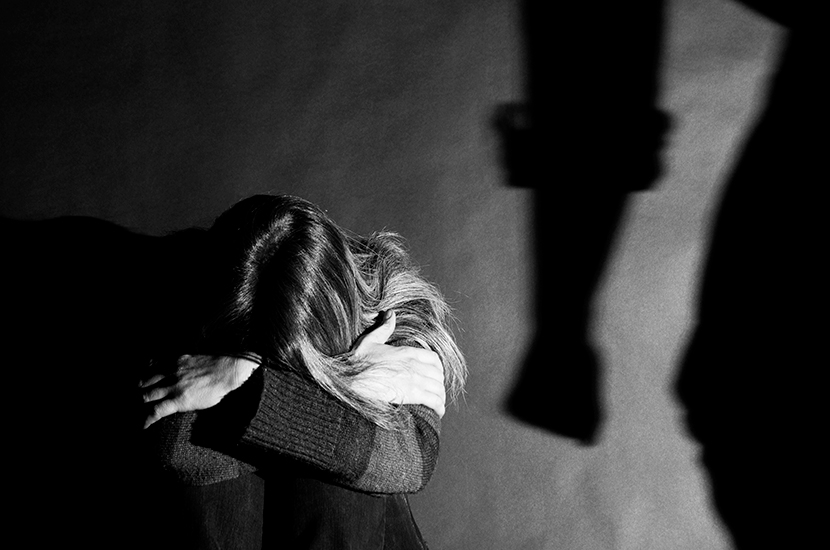For years, ministers from successive governments have conducted drills for all kinds of pandemic scenarios. But they never imagined a lockdown. It’s a new tool, and its implications — and side effects — have never been properly tested. So no one really thought about the effect it would have on something like domestic abuse.
Before the lockdown, it was estimated that two women a week were killed by their current or former partners. But that was when they could move freely. Now, opportunities for escape are scarce. The only time a victim is alone is when their abuser goes to the shop, or if they’re allowed out for exercise. The abused women (and they overwhelmingly are women) aren’t going into work, and so have little chance to tell colleagues what’s going on, or for anyone to spot signs of physical violence. This is another opportunity for the men carrying out these crimes. They stand far less chance of being found out.
An awful piece of jargon in the domestic abuse world is ‘zoning’. It is when a perpetrator hits their victim only on the parts of the body that the rest of the world doesn’t see. Domestic abuse is carried out behind closed doors — and under clothes. Women go into work looking perfectly normal but with bruises and scars all over their torsos: a pattern horribly familiar to those who work in shelters. Michelle Blunsom, who runs the East Surrey Domestic Abuse Service, tells me she has spotted a shift in the type of abuse: perpetrators who haven’t used physical violence before are starting to do so now. ‘There’s a worrying increase around head and face injuries. They’re not bothering to do “zoning” any more because no one is going to see the women.’

There are now also reports of children being abused in a way they were not when school was still on. Pupils no longer have a safe place to spend time each day, no one to talk to about what’s happening at home. Officially, children classified as ‘vulnerable’ are entitled to go to school in the lockdown but — crucially — there is no obligation for them to do so. Ministers had thought 20 per cent of pupils would keep coming. Less than 2 per cent did so. Of course, only a small minority of children exposed to abuse are recognised by social workers as being at risk.
Blunsom and other charity workers struggle to get through to women they try to help in the lockdown, because they are rarely alone. ‘We know that survivors really benefit from being directly asked if they are being abused,’ she says. ‘But now, no professional can directly ask.’ She tells her colleagues that if they are talking to abused women, they should assume not only that the perpetrator is there but that the call is taking place on speakerphone.
It’s wrong to presume that all domestic abuse is physical. In recent years, there has been far wider understanding of the emotional techniques used in coercion: constant criticisms, insults and screaming. Abusers wear their victim down, so that the victim comes to believe that they are as useless as the person they love claims they are. And also, importantly, they come to believe that their abuser is ‘looking after’ them. A classic example of ‘looking after’ is controlling the household finances to the point that the victim has no agency of their own even to buy basics like underwear or groceries, which also limits their ability to run away.
‘There’s a worrying increase around head and face injuries, because no one is going to see these women’
Huge advances have been made recently in recognising and tackling this. Nicola Sharp-Jeffs, who runs the charity Surviving Economic Abuse, says the lockdown has given abusers an opportunity to grow their system of control. ‘There will be a number of women who have lost their jobs or are furloughed whose partners are using this as an excuse to say “We should be cutting back on essentials like food, clothing and utilities” to the extent that the money they were saving to run away starts to disappear.’
Police are doing their best to respond to the rise in incidents. Ministers are aware of the long-term cost of all this: the longer the lockdown goes on for, the more cases there will be and the harder it will be for specialist services to help, especially if their funding dries up or their staff are quarantined. Some £2 million has been announced for domestic abuse helplines, but this doesn’t change the current lack of options for victims once they have found the courage and the safety to dial those numbers.
Women’s refuges have been oversubscribed for years. Pre-lockdown, an average of around 90 women and the same number of children were being turned away from these secure properties every night because of lack of space. So what to do now? Priti Patel, the Home Secretary, has said the government wants to keep victims in their homes, moving the perpetrators out instead. There will be enough accommodation available, she said. But those on the front line are sceptical that this is really possible.
Suzanne Jacob runs SafeLives, a charity which often has the Home Office’s ear on abuse policy. She worries about the end of lockdown, when women and children have more freedom to tell others what’s happening and to try to escape. (This is also the time when a woman is most likely to be murdered.) ‘There will come a safeguarding peak, when all of the things that are being suppressed behind closed doors will come out. There’s this deep anxiety around what level of service can really be provided then.’ Other charities agree, and ask how they’ll manage to pull qualified domestic abuse workers out of thin air.
But people are, at least, beginning to notice this. Perhaps one of the very few good things about this lockdown is a greater awareness, which might lead to pressure on government to do more to repair the damage — when women, currently helpless, seek help. The surge in government support for the NHS has shown what can be done when the sense of urgency is great enough. Perhaps it’s not too much to hope that when the worst of Covid is over, the indirect victims of the crisis might warrant similar attention.







Comments